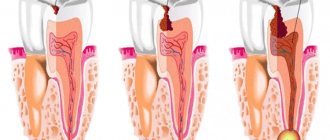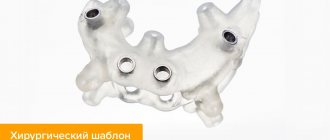Drainage is a complex procedure
It is widely known that in the treatment of a patient, not only the choice of a medical institution and the timeliness of seeking help, but also the qualifications of the doctor treating him are of great importance. The knowledge, experience and skill of a specialist are embodied not only during the operation, but also directly during the patient’s rehabilitation period. In general, the postoperative period is a very difficult period of time, during which all human vital functions are restored. At this time, he is still under the supervision of a doctor who monitors the patient’s condition and carries out all necessary medical procedures to care for the patient. The main problem that can await a patient during this period of his rehabilitation is considered to be inflammation of postoperative sutures. This phenomenon can increase the patient's time in a medical facility, as well as interfere with the healing and recovery process. One of the techniques that prevents the onset of inflammation is the wound drainage method.
Postoperative wound drainage
This technique is aimed at preventing processes that cause irritation and inflammation of the skin. It is based on the use of special drainages, which promote wound healing after surgery and serve as an antibacterial means of protection against external damage and viruses. And this is an incredibly important point that occurs in most cases after complex surgical interventions. Drainage is installed if there is a risk of wound infection, if there is bleeding or discharge from other postoperative departments. Thanks to its use, the process of releasing blood clots or lymph outside the wound occurs. If the wound festers, but drainage allows you to remove clots of pus, which contribute to the proliferation of bacteria and microbes. In most cases, multilayer gauze dressings are used as drainage; latex or silicone dressings are also used, sometimes Teflon. The choice of drainage lies with the surgeon who performed the operation, depending on the degree of infection of the wound. All drainages are treated with special antiseptic substances (like the wound itself), which increases the chances of rapid healing of the suture.
How to make an appointment with a specialist? It's simple. You just need to call the number listed above and make an appointment with a doctor
Wound drainage
How to understand whether a gynecologist is competent? What SHOULD NOT be treated? What complaints and diseases come with most often? Should you tell your gynecologist about orgasms? Is painful menstruation normal?
We talked about all this with a sensitive doctor, a charming woman and an amazing specialist with deep views on medicine - Zarema Kylychevna Khasbulatova.
Zarema Kylychevna, tell us how your path in medicine began?
Interesting question. I often think about this myself and cannot answer. I believe this is an attitude I got from my mother from childhood. I already knew from elementary school that I would become a doctor and there was no doubt about it. It seems to me that everything just went as it should. But honestly, I didn’t get into medical school the first time. Because I didn’t take my preparation seriously. A year later, I became a student at the First Moscow State Medical University named after. THEM. Sechenov”, but she graduated with honors.
I didn’t think of becoming a gynecologist; of course, I dreamed of being a surgeon. Like all medical students, we probably all go there to become great surgeons (laughs). And having gone through a thorny path, specialization itself determines us. Gynecology came thanks to teachers. I had a wonderful teacher, Maya Abdulaevna, an old and strong woman, who spoke about obstetrics with such beauty and fantastic love, so charged us with this adrenaline of obstetrics that ambitious students had no doubts.
I was originally an obstetrician, concentrating on obstetrics and surgery. Even now I am a fan of childbirth, of my pregnant girls whom I lead. It's a real drive to walk this path with my patient.
What do you value in your calling?
What I value, what I value... I found myself in this calling, it’s 100% mine, it’s hard for me to say so. I love my job and I truly love my patients. I worry with them and, unfortunately, bring all the emotions home. It’s wrong that I don’t know how to limit myself from work. This is my life and that's it.
How did you go about becoming a mother? Have your views changed?
My beloved daughter is already 9 years old. When my residency began, my daughter was 10 months old. I went through this even before starting medical practice and was in the same state as pregnant girls come to me now. It was complete ignorance of what was happening to me, in great confusion. I started to know later.
Is raising a mother-gynecologist different from a mother from another field of work? Would you put a child in a puddle or on the beach in panties?
I think it's no different. But perhaps any child from a medical family is distinguished by the fact that he is like a child of a regiment. These children are often deprived of the attention of their parents and often spend time in hospitals and hospitals with their parents. I don't have any points. I would put her in a puddle or on the beach, this has always been the case. And the issue of hygiene, due to ethnicity and religious views, is in no way different from the principles of hygiene that I was taught professionally. If my daughter gets into a puddle, I will support her, let her explore.
Do you have any principles in your work?
I think there are two main ones: the principle of evidence-based medicine and the principle of working according to conscience.
There may be a certain threat in private medicine: it is important not to cross the line between when you are really helping a person and when you are trying to earn money from an appointment. Due to my upbringing and foundations, I do not cross this line. It helps me.
At your appointments do you ask about orgasms? How do they react?
Many are confused. Some are happy that it turns out they can talk about this and share problems. Many women don’t even think about the true source of the problem; it never even occurred to them that it’s not them, but their husbands/partners. Many people, after 10-20 years of marriage, don’t even think about talking to their husband about these topics. There are savvy patients who understand the importance of female orgasm, but they don’t know how to achieve this or why it doesn’t work. Most problems in the intimate sphere can actually be solved simply by talking with the patient.
“If a patient does not feel better after talking with a doctor, then he is not a doctor.”
Vladimir Bekhterev.
In order to live a full intimate life and experience it in all its colors, one woman needs to send her husband to a urologist, another woman just needs to talk to her partner. There are reasons in physiology. Many people simply need a conversation between the doctor and the patient, which solves part of the problem.
Do you conduct conversations differently with different women?
Yes, definitely. Representatives of completely different psychotypes come to me, and from the very first word “Hello!” and the manner of opening the door of my office, I understand the tactics of the upcoming conversation. Powerful women, for example, cannot be given any slack. They often come with a complaint, especially if she has already gone through a long, thorny path of treatment. But I realize that a person comes for help, even if he is afraid to accept it, denies help, or does not even realize that he needs it. But for some reason he came, and I am obliged to help.
What problems do people most often come to you with?
Probably the most common scenario is the presence of infectious inflammatory processes. Girls often come with the desire to get pregnant, but they fail due to untreated infections, or the woman is not at all aware of their presence. Unfortunately, for example, chlamydia, even if treated, can lead to difficulties with conception, so it must be treated immediately, without delay.
But on the other hand, there are poor girls who were treated for something that did not need to be treated at all and their health was ruined.
Can you give examples of what diagnoses should not be treated and how to determine the competence of a doctor?
Firstly, girls often come to me with healed ureaplasma. The usual scenario: during a professional examination, a woman was diagnosed with ureaplasma, which did not bother her anywhere. I turned to one gynecologist - she was prescribed a full list of prescriptions with 2 antibiotics at the same time, immunomodulators and other endless list of medications. Which will simply disrupt her body and give her much more problems. I think this is a problem.
No need to treat tests! Complaints need to be treated.
But be careful here. There are pathogenic infections that need to be treated, even if there are no complaints. These are chlamydia, gonorrhea, trichomonas and genital mycoplasma.
But more often it happens that a woman undergoes routine tests, nothing worries her, the pH of the vagina is wonderful. And then they find Gardonella with ureaplasma. And it begins. And the woman becomes really sick. Recently a girl came to me, tired to the point of madness from the endless treatment of the discovered gardanarella. So this girl eventually lost her menstruation and, against the background of aggressive treatment for an infection that did not need to be treated, began to suffer from numerous inflammatory processes. According to her, she underwent powerful courses of antibiotic therapy 5 times because the gardanarella did not go away. And they tore off the whole body. It took a long and difficult time to restore. Let this gardanarella live happily, this is her “home”, she would not influence anything in any way, requiring only control. She still never left.
Another example is when functional cysts are treated with hormonal contraceptives. When the first ultrasound revealed a functional cyst and with the next menstruation it can resolve on its own. Instead, hormones are prescribed.
If, during the test, another random finding is discovered - candida, then we also leave the woman alone in 90% of cases, if nothing bothers her, does not hurt or itch. But! If it causes discomfort, that’s a separate conversation. This is individual in each specific case.
Another important point.
Contraceptives are prescribed for contraception.
I understand that this is obvious, but often contraceptives are prescribed for everything. We must understand that OK is a long-acting tablet. The same thing, if a therapist prescribes medicine for blood pressure, he will do an ultrasound and tests. Before choosing OK, we look at the condition of the woman’s leg veins, the health of her breasts, the condition of her kidneys, and the thickness of her blood. Girls, contraceptives do not cure painful menstruation. They simply turn off the ovaries.
Is painful menstruation normal?
First, you need to understand the level of pain. It is very rare that a woman does not experience PMS. Our hormones are on fire. Of course, the woman feels a certain pain. But there are red flags. What to pay attention to:
- Level of pain. Can a woman not take the pill and experience discomfort, or is she incapacitated without the pill? Is this the peak state when she feels nauseous or even loses consciousness, or is it a slight discomfort and nervousness.
- Blood volume, presence of clots. There is a misconception that the more the better, like the ovaries work well. But that's not true.
Painful menstruation can signal hyperplastic processes, dysplasia, endometriosis or polyps.
It is better to resolve this issue together with your doctor.
Let's summarize: what is a happy woman like?
Mmmm... Happy woman? A picture pops up in my mind: a mother of 3 children (no less) and next to her is a strong support, a strong man’s shoulder. This is a woman’s natural physiological purpose and the guarantee of her health. Of course, to have support. Why mother of 3 children? From a medical point of view, this is a woman who has regular sex life, a permanent partner, and has lactated three times (lactation is the prevention of breast cancer). She minimized her menstruation during her pregnancies and lactation. I always say that our body is primitive, the female body is created to give birth and feed. Forgive me feminists. Our grandmothers gave birth to 10-15 children, and the issue of uterine fibroids did not exist; they menstruated 40 times in their entire lives. Old obstetricians say:
«The uterus is crying tears of blood for a failed pregnancy.”
Imagine. The uterus has worked, created ovulation, released an egg, grown the endometrium, is waiting for its sperm - but there is no pregnancy. It’s like we worked, worked, worked - but they didn’t give us a salary. What a disappointment! Do we want to work? Let's start getting sick! And so does the uterus.
Therefore, here is my ideal image of a happy woman. Girls, I wish you all to achieve YOUR ideal image of a happy woman. Everyone can have their own.
Types of drainage
Drainage has its own types:
- Active - installed for the outflow of liquids through a special tube or hole from the bottom up;
- Passive - on the contrary, is installed according to the top-down principle.
The use of any of the presented types of drainage depends on the patient’s well-being, the degree of complexity of the operation performed, and the presence or absence of signs of inflammation. It is worth noting that failure to use wound drainage greatly contributes to the deterioration of suture healing time and can lead to the entry of microorganisms and infections into the wound, which are especially dangerous for patients in the postoperative period.
You can ask all questions on the topic by phone: +7-(928)-900-32-69
After the procedure
After the procedure, you will be placed in a recovery room. You will need to stay in bed until the sedative medicine wears off.
In the recovery room, the nurse will continue to monitor your condition, heart rate, breathing and blood pressure. They will watch your catheter for possible bleeding.
About your catheter
A black mark will be placed on your catheter at the top of the disc (see Figure 4). The nurse will show it to you. This mark should always be at the same distance from the top of the disc. If the distance changes, the catheter has moved. You should call the interventional radiology department to have a staff member check the position of the catheter.
Figure 4. Black mark at the top of the disc.
The outer end of the catheter is connected to a 3-way stopcock (see Figure 5). It is called a 3-way stopcock because it has 3 connection points and a stopcock that can be turned to control the flow of bile. The drainage bag will be attached to the connection point opposite the catheter. The third connection point has a safety valve cap through which you can inject liquids. This valve is called a needleless connector.










